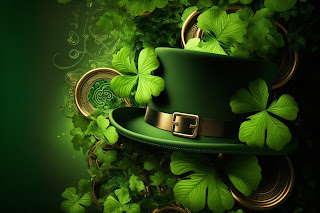The Greeks tell the tale of the titan Prometheus, who got this crazy idea to steal fire from the gods and give it to humans. Humanity has never been the same, and Prometheus got to spend a lot of time torturously chained to a rock to think about what he had done as a result. Not being an ancient Greek, I believe this to be fiction, but it is an interesting story, if violent at times. (In his novel The Silmarillion, JRR Tolkien tells of the elf Maedhros, who has a lot in common with Prometheus. That story is not the same, but both stories involve hanging out on rocks—quite literally—as well as fire, and stealing valuable items from powerful beings.) In any case, humans have used fire for millenia in multiple ways, for cooking food, warming up, roasting marshmallows, sitting around a campfire telling ghost stories, and more. In school I learned about how Abraham Lincoln sat by his fireplace and read by the light of the fire. For many years, people lit torches using sticks, branches, and other materials, when they needed light on a long trek, or exploring a cave, or any time they needed light they could hold. Fire has always been both helpful and destructive. It can help cook food and warm people on a cold day to sustain life, and destroy life and property if misused or allowed to get out of control.
 |
| Shine Together Painting by Jason Kotecki All Rights Reserved. Used with permission. |
As time went on, people invented candles out of wax and wicks. I did homework by candlelight in the Philippines when our power went out. Candles could be used in a similar way to torches, though they didn't necessarily give off as much light, generally being smaller than your average torch. Candles lit chandeliers, sconces and other light fixtures. Some cultures even put them on their Christmas trees. (It still blows my mind how that worked without starting fires. The modern lights on strings seem safer to me.)
Thanks to a key and a kite and some lightning, Benjamin Franklin gained some important insight on electricity. The lightbulb came along, and Edison got the first patent, though he does not deserve sole credit for the invention.
Of course, most of the above was before my time (aside from doing homework by candlelight). By the time I came along, lightbulbs were common. Cars had headlights. Lighthouses shone their powerful lights out to sea to help passing and approaching boats. Spotlights and other lights lit up the theatre stage. Lamps and lanterns lit up rooms and other spaces. People could also use lanterns in much the same way they used torches (sometimes using fire and sometimes lightbulbs), and in a safer manner than torches. Though gaslighting has a different meaning now, that concept is inspired by a play and movie called Gaslight, which features lamps that required gas to burn. (The movie was Angela Lansbury's cinematic debut.) For centuries, people used gas and oil in lanterns, as it burns easily. As long as it is contained and used carefully, it can generally be used safely. But used unsafely, it can cause big problems when mixed with flames. We had flashlights by the time I came around, which could be held in the hand and shine light by means of a lightbulb inside. (The British still call them torches. In CS Lewis' Prince Caspian, Edmund got a torch for his birthday and left it in Narnia. We would call that a flashlight.)
There was another nifty invention that was much newer by the time I came along. The lava lamp (painting above) was invented in 1963, and was popular in the '60s and '70s. It was lit from the bottom and filled with two kinds of liquid. A thick wax mixture floated in water. The light from the bottom of the lamp often changed color while the thicker liquid floated around, gently bubbling, separating, merging, and just generally being mesmerizing to watch, especially with the changing colors. They didn't give off a lot of light, but it was enough to light a dark room softly and made for a relaxing atmosphere. They were also a good deal more relaxing than watching real lava erupting out of a volcano. Well, if I were in the vicinity of an erupting volcano, I very likely would not be passively watching.
A few years ago, once camera flashes were introduced on cell phones, those flashes were eventually able to be repurposed for use as a flashlight. The first time I downloaded a flashlight on my cell phone, it struck me that I never would have dreamed that would be something I could download. Now it comes standard on smartphones. I still have regular flashlights, but I generally use my phone when I need one. However, to light up a room, my phone doesn't usually provide enough light, and I need ceiling lights and/or lamps, or if the power is out, lanterns. We also have headlamps we can strap to our head if we need our hands free to explore in the dark. Book lights also help when reading a traditional book in the dark. Some candles run on batteries without the need to light a flame. Using the definition of the word that the kids use today, it's really lit!















